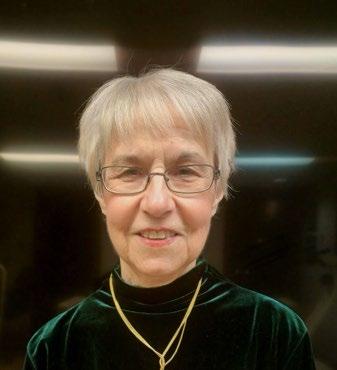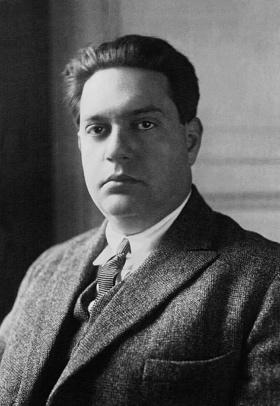
Faculty Recital Series 2024 – 2025 Season
Sara M. Snell Music Theater Thursday, February 6th at 7:30 PM
Lauren Becker, horn Keilor Kastella, piano
Pale Blue Dot for Solo Horn and Fixed Media (2022)
Sonatina, Op. 56 (1960)
Gina Gillie (b. 1981)
Ruth Gipps
Moderato (1921-1999)
Minuet: Andantino
Variations on a Ground: Maestoso
Romance (1992)
Élégie, FP 168 (1957)
Intermission
Elizabeth Raum (b. 1945)
Francis Poulenc (1899-1963)
La Cheminée du Roi René (The Chimney of King Darius Milhaud René), Op. 205 (1939) (1892-1974)
Cortège (Procession)
Aubade (Morning Serenade)
Jongleurs (Jugglers)
La Maousinglade (Sarabande)
Joutes Sur L’Arc (Jousts on the River Arc)
Chasse a Valabre (Hunting at Valabre)
Madrigal- Nocturne
Nebula (2022)
Brian Dunbar, flute
Anna Hendrickson, oboe
Julianne Kirk Doyle, clarinet
Carol Lowe, bassoon
American composer Gina Gillie is a self-described “nomadic composer” who interprets her musical style as “characterized by beautiful melodies and accessible harmonies, interwoven with playful counterpoint.” Gillie trained as a horn player and most of her compositions feature brass instruments. Before beginning her recent journey around the world, she held the position of Professor of Music at Pacific Lutheran University.
On her work Pale Blue Dot, Gillie says:

Pale Blue Dot for Solo Horn and Fixed Media is inspired by the 1991 photograph taken by the Voyager 1 spacecraft at the request of Carl Sagan, as well as Sagan’s prose reflecting on said image. In the photo, Earth appears as a single pixel –“a mote of dust suspended in a sunbeam.” Sagan’s reflections describe the earth and humans’ relationship to this lovely and lonely planet as well as the planet’s relationship to the great vastness of space.
This composition for horn and fixed media is a journey through space, both sonically and visually. The accompanying video begins with the Pale Blue Dot photo and expands outwards to the great vastness of space. Images from the James Webb telescope remind us that earth is “a very small stage in a vast cosmic arena.” A lonely and ethereal motif played by struck water glasses is a sonic representation of the twinkling of stars spread across the heavens. In a journey past the planets, the music utilizes a water glass choir underneath a weaving and reaching horn solo.
Once we reach Earth, the music transitions to a jubilant melody that celebrates the beauty of our plant. Beautiful images of landscapes, animals, and nature are accompanied by animal sounds and salutations in different languages from the Voyager’s Golden Records. Together, they represent Earth’s biodiversity.
The second half of the piece reflects on humanity’s impact on our environment. The last Voyager greeting, in English (“Hello from the children of planet Earth”), recorded by Sagan’s own son, is gradually chopped into bits until a single “Hello?” sounds like a plea. The music turns darker and more rending, accompanied by images of various environmental and climate challenges.
At the end of the work, the camera pulls back from the earth and fades back out to the Pale Blue Dot photo. The audience is reminded of our relative cosmic smallness but with the understanding that Earth is all we have. In Sagan’s words, he calls for us to “deal more kindly with one another, and to preserve and cherish the pale blue dot, the only home we’ve ever known.”
https://www.ginagilliemusic.com
Ruth Gipps was an English pianist, oboist, conductor, and composer. Her large compositional output includes symphonic and choral works, pieces for chamber ensembles of various configurations, and solo works for horn, trombone, voice, piano, and oboe, among others. Gipps’ Sonatina, Op. 56, like many of her solo and chamber ensemble compositions that feature the horn, was written for her son, Lance Baker (former co-principal horn of the English National Opera). Gipps’ works follow his career at different points of his musical development, from student to professional. This Sonatina, composed when Baker was a young teenager, may have served an extra instructional purpose on common musical styles and horn playing idioms.


Canadian Elizabeth Raum has made a career as an oboist and prolific composer, having written operas, concerti, vocal works, choral pieces (including an oratorio), ballets, orchestral works, and over 90 chamber pieces. She enjoys a reputation of being one of Canada’s most “accessible” composers, writing for varied mediums and in remarkably diverse styles. Romance is a short, melodic work that harkens back to the many romances, nocturnes, intermezzos, and other similar Romantic works that were so frequently composed for horn and piano in the nineteenth century, but with more modern harmonic language.
https://elizabethraum.com/
Francis Poulenc was a French composer and gifted pianist. He was known as one of the members of Les Six, a group of six composers working in France whose music is often seen as a reaction against the compositions of Wagner and some prominent French composers, like Debussy and Ravel Poulenc composed in many major genres and his list of compositions includes solo works, art song, ballet and orchestral music, opera, oratorio, and chamber music. Poulenc dedicated this Élégie to the memory of British horn virtuoso Dennis Brain, who died tragically in 1957 and remains one of the most celebrated and revered hornists for his musical artistry. This piece is a dramatic work with stark and abrupt stylistic changes, perhaps reflecting Poulenc’s feelings as he worked through grief.


Another member of Les Six, French composer Darius Milhaud wrote over 400 works, including operas, chamber music, solo works, ballet music, and choral works. La Cheminée du Roi René (The Chimney of King René) is an adaption for woodwind quintet of Milhaud’s own scoring for the 1939 film Cavalcade d’amour. The story for the film is set in the 15th century court of King René I and the title is a play on words for “fireplace”, “chimney”, and “promenade.” Each movement depicts a different scene of life at court.

Aliyah Danielle is a dynamic artist with a unique approach that can be summed up in one word: unconventional. The winding roads of Aliyah’s diverse interests and experiences converge to form the heart of her creations, which seek to tell stories through sound and blend genres to create new, interesting sonic textures. A collaborator at heart, Aliyah’s mission is to use her art to pose questions and start conversations surrounding issues embedded in out world’s cultural and social systems, allowing us to better understand others and their belief systems. Aliyah enjoys a multifaceted career including performing, composing, arranging, orchestration, producing, and teaching. Primarily performing as a singer and F rench horn player, she frequently experiments with genre - fusion and performs music influenced by funk, neo - soul, gospel, jazz, classical, and other contemporary styles. She regularly performs original music as a part of her own projects and initiatives and supports various artists all around the world. She received her Master of Music in Contemporary Performance (Production Concentration) from Berklee College of Music in Valencia, Spain, and also holds a Bachelor of Music in Music Education from Arizona State University in Tempe, Arizona.
Dedicated to equity and inclusion within the field of music, Aliyah is a founding member and the Director of Programming for the Chromatic Brass Collective , an organization founded by Black women which celebrates, performs, mentors and educates in an effort to increase the visibility of racially and ethnically underrepresented women and gender nonconforming people throughout the brass world. She is also a member of the International Society for Black Musicians , Maestra Music Organization , Musicians United for Social Equity and the International Women’s Brass Conference .
Nebula is the lead single from Aliyah Danielle’s debut album GENESIS, on which she says she “explore(s) the themes of mental health, breaking free from societal expectations, personal growth, and healing.” Nebula is performed as a work for solo horn and electronics.
https://www.aliyahdanielle.com/
